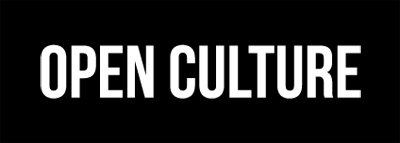By Ade Blackburn
Liverpool has a renowned history of comedic talent, comedy that made us laugh and challenged the ideas of what humour could be. Here’s a selection of legendary comedians from the region.

1. Alexei Sayle
Best known for his cynicism and political awareness, Alexei Sayle also developed his own unique brand of physical comedy. Much of his humour is in the surreal tradition of Monty Python and his style led to various roles in the classic 1980s comedy The Young Ones. The success of the show was followed by appearances in Doctor Who and Indiana Jones and The Last Crusade.
Alexei Sayle also forged a side-career as an unlikely 80s pop star, his most successful single was the suitably unhinged Ullo John Gotta New Motor which made the Top 20 in 1984. The single was recorded with hit producers Clive Langer and Alan Winstanley, who worked with Madness and Elvis Costello.
2. Chris Cairns
Chris Cairns has gained a reputation for being able to handle the toughest of rooms with his sharp put downs and a fine eye for a cutting remark.
He is a regular compere at Laughterhouse venues in Liverpool and is known all over the country as a friend to the audience but a deadly foe to the heckler. He was awarded Eric Morecambe Comedian of the Year and Liverpool Comedian of the Year in 2011.
As well as performing stand up comedy, Chris is also educating the next generation of stand up comedians as a tutor on Stand Out, the comedy course for 14-18 year olds in the North West.
3. Kenny Everett
From a Catholic family, Kenny Everett attended the local secondary modern school in Crosby, now part of Sacred Heart Catholic College. Born Maurice Cole, he started his career with spells on pirate radio in the mid-1960s and was one of the first DJs to join BBC’s newly-created Radio 1 in 1967.
The Kenny Everett Video Show was his big comedy breakthrough and a vehicle for Everett’s characters such as the infamous Sid Snot and Cupid Stunt. Various pop and TV stars made cameo appearances on the show, including Kate Bush and Freddie Mercury.
In the first three series, all the animated segments were created by the fledgling Cosgrove_Hall partnership, later responsible for the children’s cartoon series Dangermouse.
4. Faith Brown
One of the earliest female comedians to break into television in the 1970s, Faith Brown attended Walton’s St Francis De Sales School and was a singer in vocal group The Carrolls with her brothers, before using her talent for mimicry to switch to comedy impressions.
She became known for her impressions of Hollywood stars and eventually presented her own primetime show, regularly attracting millions of viewers. As her profile grew, she appeared as a guest on Blankety Blank and is another surprise veteran of Doctor Who, Faith played an alien in the 1985 story Attack of the Cybermen.
In recent years, she made a comeback on the reality show I’m a Celebrity…Get Me out of Here! and worked as a children’s presenter at the BBC.
5. Arthur Askey
Askey was born in Moses Street, Dingle in 1900, he was known for his short stature, distinctive horn-rimmed glasses, and his playful humour.
In the early 1930s, Askey appeared on an early form of BBC television— The Spinning Disc invented by John Logie Baird that scanned vertically and had only thirty lines. Askey had to be heavily made up for his face to be recognisable at such low resolution.
When television became electronic, with 405 horizontal lines, Askey was a regular performer in variety shows such as The Good Old Days and subsequently starred in several comedy films as part of the Second World War effort.
6. Ken Dodd
No comedy list would be complete without the legendary ‘Doddy’. A lifelong resident of Knotty Ash, Ken Dodd’s career as an entertainer started in the mid-1950s.
His performances would run for several hours, frequently past midnight. He earned a place in The Guinness Book of Records for the world’s longest ever joke-telling session: 1,500 jokes in three-and-a-half hours (7.14 jokes per minute).
His surreal gags were supplemented by his infamous tickling stick and the legendary Diddy Men. He interspersed the comedy with songs, both serious and humorous, which led to several hit singles in the 1960s. He even appeared in some dramatic roles, including a part in the 1996 film of Hamlet, directed by Kenneth Branagh.
Visit the Uncover Liverpool Events Listings to discover up-coming comedy events and much more!






















